Mahmoud Famouri
High-Throughput, High-Performance Deep Learning-Driven Light Guide Plate Surface Visual Quality Inspection Tailored for Real-World Manufacturing Environments
Dec 20, 2022



Abstract:Light guide plates are essential optical components widely used in a diverse range of applications ranging from medical lighting fixtures to back-lit TV displays. In this work, we introduce a fully-integrated, high-throughput, high-performance deep learning-driven workflow for light guide plate surface visual quality inspection (VQI) tailored for real-world manufacturing environments. To enable automated VQI on the edge computing within the fully-integrated VQI system, a highly compact deep anti-aliased attention condenser neural network (which we name LightDefectNet) tailored specifically for light guide plate surface defect detection in resource-constrained scenarios was created via machine-driven design exploration with computational and "best-practices" constraints as well as L_1 paired classification discrepancy loss. Experiments show that LightDetectNet achieves a detection accuracy of ~98.2% on the LGPSDD benchmark while having just 770K parameters (~33X and ~6.9X lower than ResNet-50 and EfficientNet-B0, respectively) and ~93M FLOPs (~88X and ~8.4X lower than ResNet-50 and EfficientNet-B0, respectively) and ~8.8X faster inference speed than EfficientNet-B0 on an embedded ARM processor. As such, the proposed deep learning-driven workflow, integrated with the aforementioned LightDefectNet neural network, is highly suited for high-throughput, high-performance light plate surface VQI within real-world manufacturing environments.
Faster Attention Is What You Need: A Fast Self-Attention Neural Network Backbone Architecture for the Edge via Double-Condensing Attention Condensers
Aug 22, 2022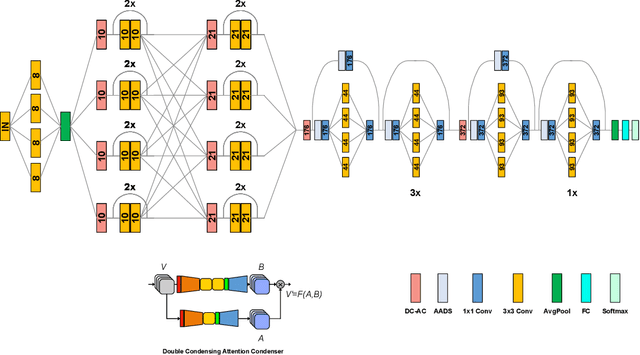
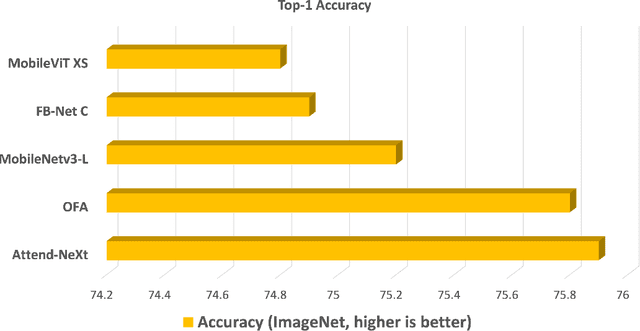
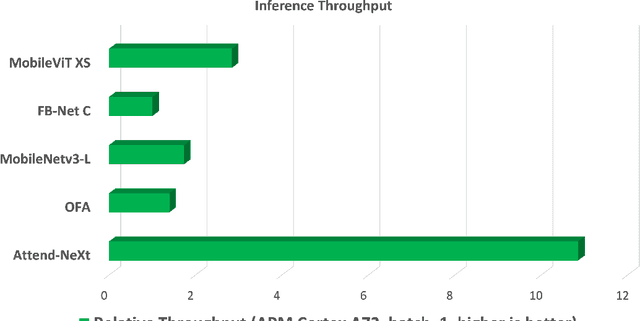
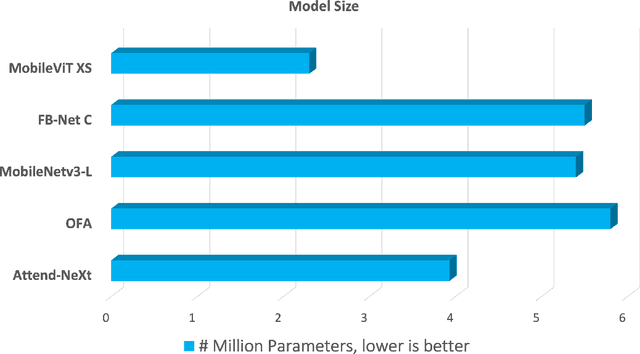
Abstract:With the growing adoption of deep learning for on-device TinyML applications, there has been an ever-increasing demand for more efficient neural network backbones optimized for the edge. Recently, the introduction of attention condenser networks have resulted in low-footprint, highly-efficient, self-attention neural networks that strike a strong balance between accuracy and speed. In this study, we introduce a new faster attention condenser design called double-condensing attention condensers that enable more condensed feature embedding. We further employ a machine-driven design exploration strategy that imposes best practices design constraints for greater efficiency and robustness to produce the macro-micro architecture constructs of the backbone. The resulting backbone (which we name AttendNeXt) achieves significantly higher inference throughput on an embedded ARM processor when compared to several other state-of-the-art efficient backbones (>10X faster than FB-Net C at higher accuracy and speed and >10X faster than MobileOne-S1 at smaller size) while having a small model size (>1.37X smaller than MobileNetv3-L at higher accuracy and speed) and strong accuracy (1.1% higher top-1 accuracy than MobileViT XS on ImageNet at higher speed). These promising results demonstrate that exploring different efficient architecture designs and self-attention mechanisms can lead to interesting new building blocks for TinyML applications.
CellDefectNet: A Machine-designed Attention Condenser Network for Electroluminescence-based Photovoltaic Cell Defect Inspection
Apr 25, 2022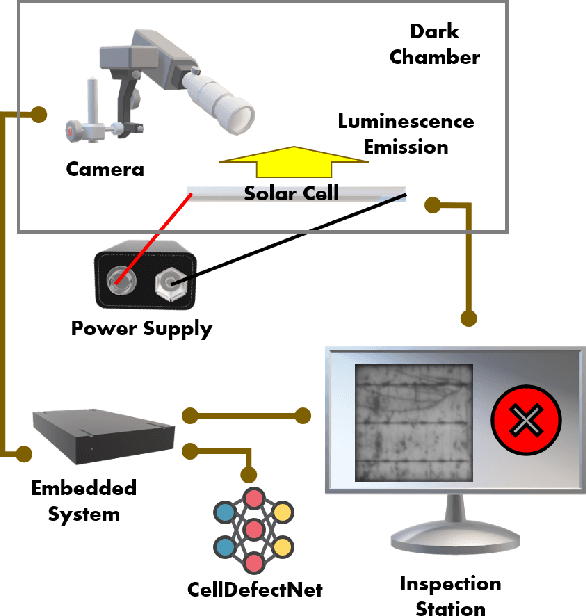
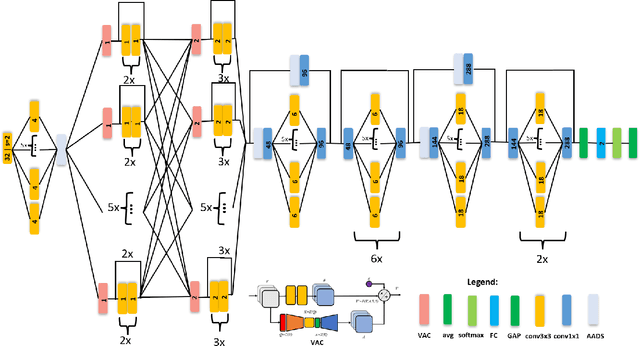
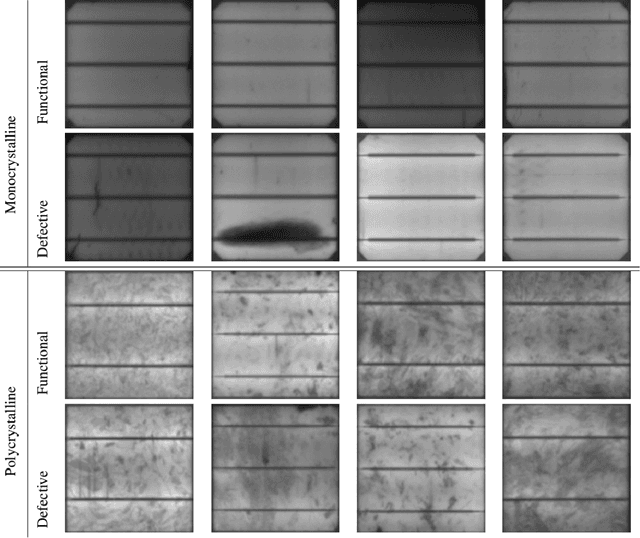

Abstract:Photovoltaic cells are electronic devices that convert light energy to electricity, forming the backbone of solar energy harvesting systems. An essential step in the manufacturing process for photovoltaic cells is visual quality inspection using electroluminescence imaging to identify defects such as cracks, finger interruptions, and broken cells. A big challenge faced by industry in photovoltaic cell visual inspection is the fact that it is currently done manually by human inspectors, which is extremely time consuming, laborious, and prone to human error. While deep learning approaches holds great potential to automating this inspection, the hardware resource-constrained manufacturing scenario makes it challenging for deploying complex deep neural network architectures. In this work, we introduce CellDefectNet, a highly efficient attention condenser network designed via machine-driven design exploration specifically for electroluminesence-based photovoltaic cell defect detection on the edge. We demonstrate the efficacy of CellDefectNet on a benchmark dataset comprising of a diversity of photovoltaic cells captured using electroluminescence imagery, achieving an accuracy of ~86.3% while possessing just 410K parameters (~13$\times$ lower than EfficientNet-B0, respectively) and ~115M FLOPs (~12$\times$ lower than EfficientNet-B0) and ~13$\times$ faster on an ARM Cortex A-72 embedded processor when compared to EfficientNet-B0.
LightDefectNet: A Highly Compact Deep Anti-Aliased Attention Condenser Neural Network Architecture for Light Guide Plate Surface Defect Detection
Apr 25, 2022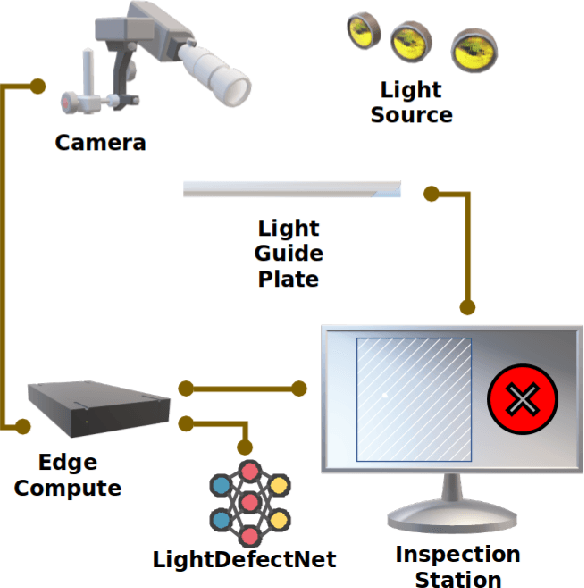

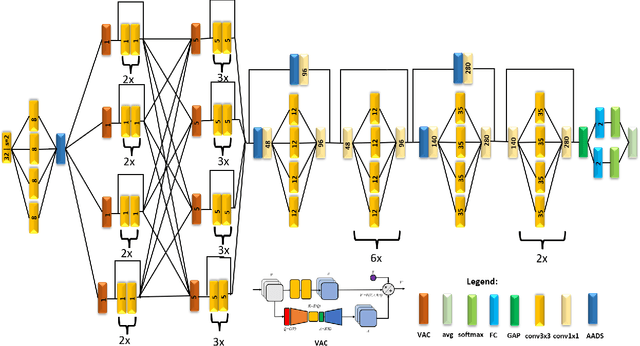
Abstract:Light guide plates are essential optical components widely used in a diverse range of applications ranging from medical lighting fixtures to back-lit TV displays. An essential step in the manufacturing of light guide plates is the quality inspection of defects such as scratches, bright/dark spots, and impurities. This is mainly done in industry through manual visual inspection for plate pattern irregularities, which is time-consuming and prone to human error and thus act as a significant barrier to high-throughput production. Advances in deep learning-driven computer vision has led to the exploration of automated visual quality inspection of light guide plates to improve inspection consistency, accuracy, and efficiency. However, given the cost constraints in visual inspection scenarios, the widespread adoption of deep learning-driven computer vision methods for inspecting light guide plates has been greatly limited due to high computational requirements. In this study, we explore the utilization of machine-driven design exploration with computational and "best-practices" constraints as well as L$_1$ paired classification discrepancy loss to create LightDefectNet, a highly compact deep anti-aliased attention condenser neural network architecture tailored specifically for light guide plate surface defect detection in resource-constrained scenarios. Experiments show that LightDetectNet achieves a detection accuracy of $\sim$98.2% on the LGPSDD benchmark while having just 770K parameters ($\sim$33$\times$ and $\sim$6.9$\times$ lower than ResNet-50 and EfficientNet-B0, respectively) and $\sim$93M FLOPs ($\sim$88$\times$ and $\sim$8.4$\times$ lower than ResNet-50 and EfficientNet-B0, respectively) and $\sim$8.8$\times$ faster inference speed than EfficientNet-B0 on an embedded ARM processor.
TinyDefectNet: Highly Compact Deep Neural Network Architecture for High-Throughput Manufacturing Visual Quality Inspection
Nov 29, 2021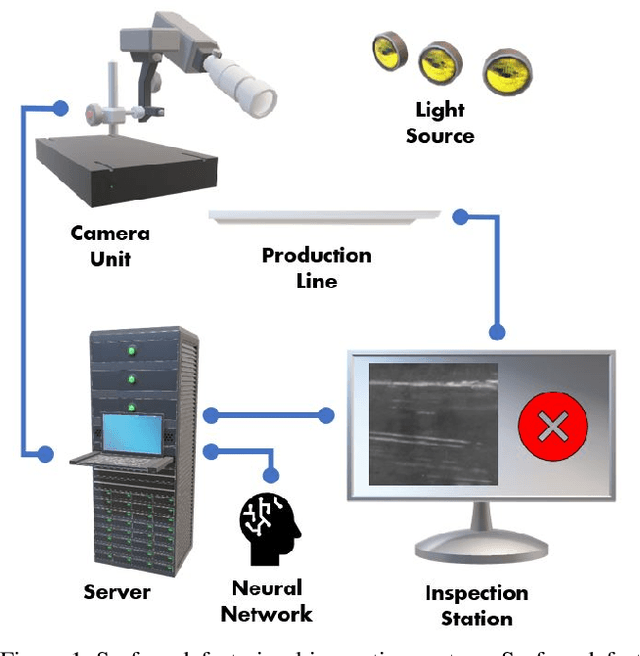

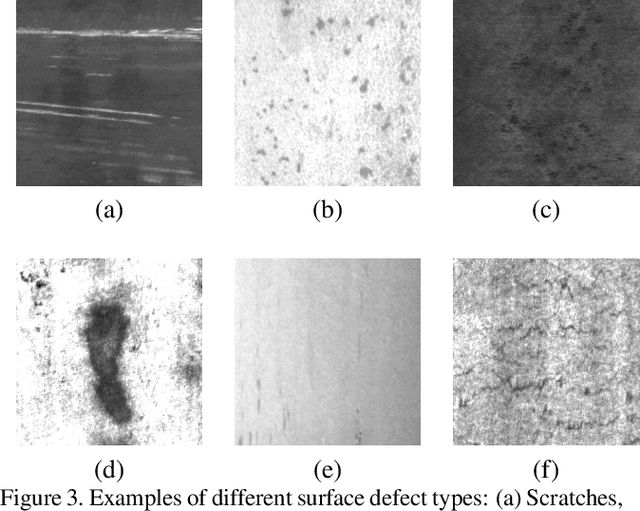
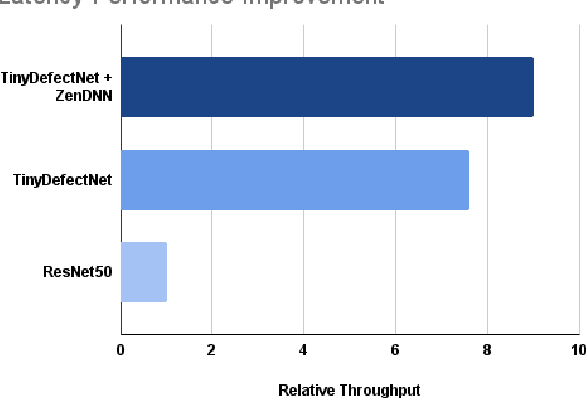
Abstract:A critical aspect in the manufacturing process is the visual quality inspection of manufactured components for defects and flaws. Human-only visual inspection can be very time-consuming and laborious, and is a significant bottleneck especially for high-throughput manufacturing scenarios. Given significant advances in the field of deep learning, automated visual quality inspection can lead to highly efficient and reliable detection of defects and flaws during the manufacturing process. However, deep learning-driven visual inspection methods often necessitate significant computational resources, thus limiting throughput and act as a bottleneck to widespread adoption for enabling smart factories. In this study, we investigated the utilization of a machine-driven design exploration approach to create TinyDefectNet, a highly compact deep convolutional network architecture tailored for high-throughput manufacturing visual quality inspection. TinyDefectNet comprises of just ~427K parameters and has a computational complexity of ~97M FLOPs, yet achieving a detection accuracy of a state-of-the-art architecture for the task of surface defect detection on the NEU defect benchmark dataset. As such, TinyDefectNet can achieve the same level of detection performance at 52$\times$ lower architectural complexity and 11x lower computational complexity. Furthermore, TinyDefectNet was deployed on an AMD EPYC 7R32, and achieved 7.6x faster throughput using the native Tensorflow environment and 9x faster throughput using AMD ZenDNN accelerator library. Finally, explainability-driven performance validation strategy was conducted to ensure correct decision-making behaviour was exhibited by TinyDefectNet to improve trust in its usage by operators and inspectors.
COVID-Net Clinical ICU: Enhanced Prediction of ICU Admission for COVID-19 Patients via Explainability and Trust Quantification
Sep 14, 2021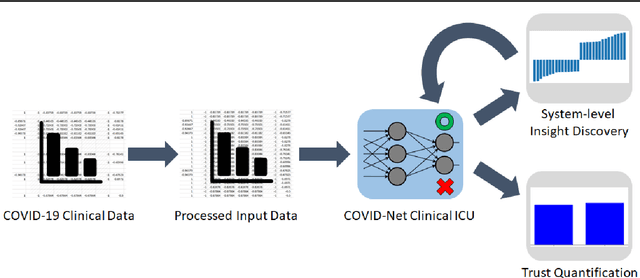
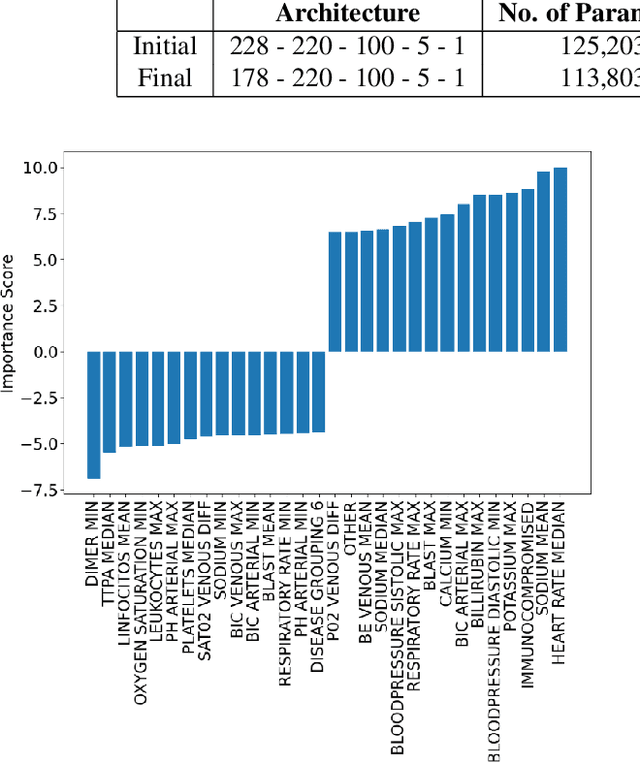
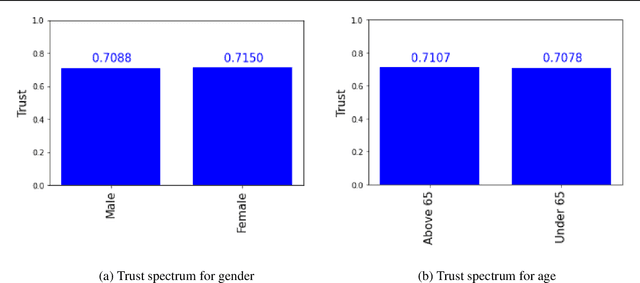
Abstract:The COVID-19 pandemic continues to have a devastating global impact, and has placed a tremendous burden on struggling healthcare systems around the world. Given the limited resources, accurate patient triaging and care planning is critical in the fight against COVID-19, and one crucial task within care planning is determining if a patient should be admitted to a hospital's intensive care unit (ICU). Motivated by the need for transparent and trustworthy ICU admission clinical decision support, we introduce COVID-Net Clinical ICU, a neural network for ICU admission prediction based on patient clinical data. Driven by a transparent, trust-centric methodology, the proposed COVID-Net Clinical ICU was built using a clinical dataset from Hospital Sirio-Libanes comprising of 1,925 COVID-19 patients, and is able to predict when a COVID-19 positive patient would require ICU admission with an accuracy of 96.9% to facilitate better care planning for hospitals amidst the on-going pandemic. We conducted system-level insight discovery using a quantitative explainability strategy to study the decision-making impact of different clinical features and gain actionable insights for enhancing predictive performance. We further leveraged a suite of trust quantification metrics to gain deeper insights into the trustworthiness of COVID-Net Clinical ICU. By digging deeper into when and why clinical predictive models makes certain decisions, we can uncover key factors in decision making for critical clinical decision support tasks such as ICU admission prediction and identify the situations under which clinical predictive models can be trusted for greater accountability.
AttendSeg: A Tiny Attention Condenser Neural Network for Semantic Segmentation on the Edge
Apr 29, 2021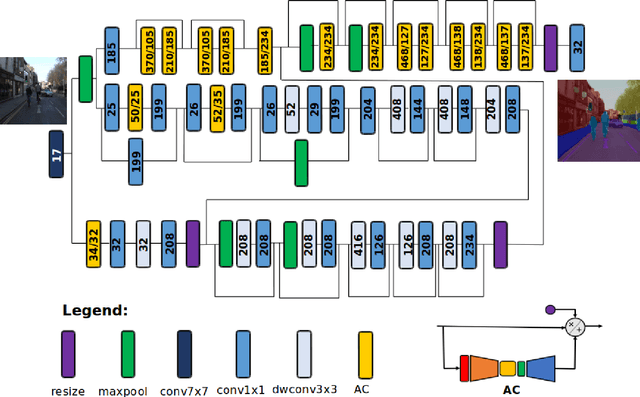

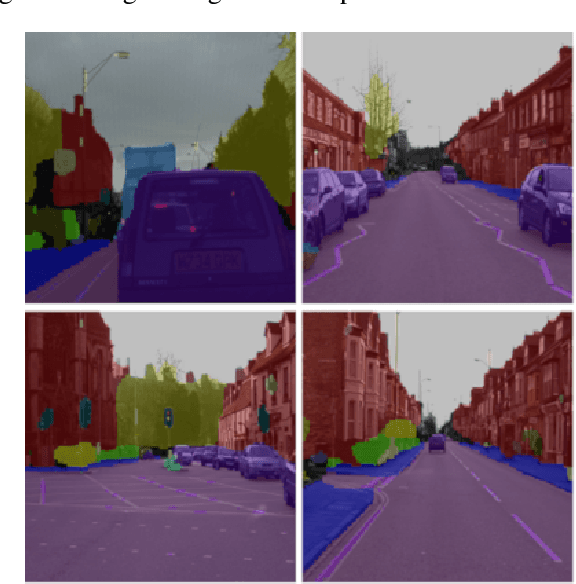
Abstract:In this study, we introduce \textbf{AttendSeg}, a low-precision, highly compact deep neural network tailored for on-device semantic segmentation. AttendSeg possesses a self-attention network architecture comprising of light-weight attention condensers for improved spatial-channel selective attention at a very low complexity. The unique macro-architecture and micro-architecture design properties of AttendSeg strike a strong balance between representational power and efficiency, achieved via a machine-driven design exploration strategy tailored specifically for the task at hand. Experimental results demonstrated that the proposed AttendSeg can achieve segmentation accuracy comparable to much larger deep neural networks with greater complexity while possessing a significantly lower architecture and computational complexity (requiring as much as >27x fewer MACs, >72x fewer parameters, and >288x lower weight memory requirements), making it well-suited for TinyML applications on the edge.
OutlierNets: Highly Compact Deep Autoencoder Network Architectures for On-Device Acoustic Anomaly Detection
Apr 19, 2021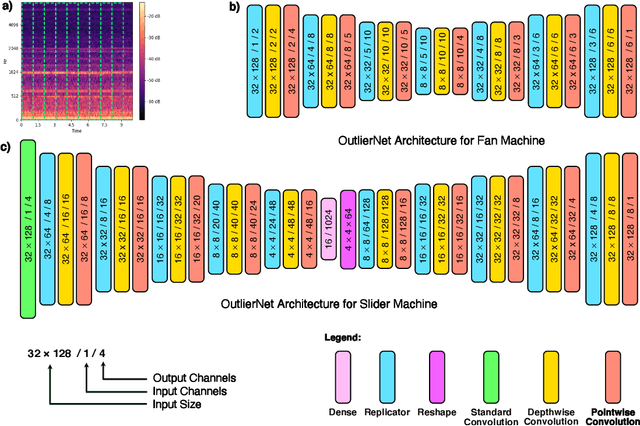
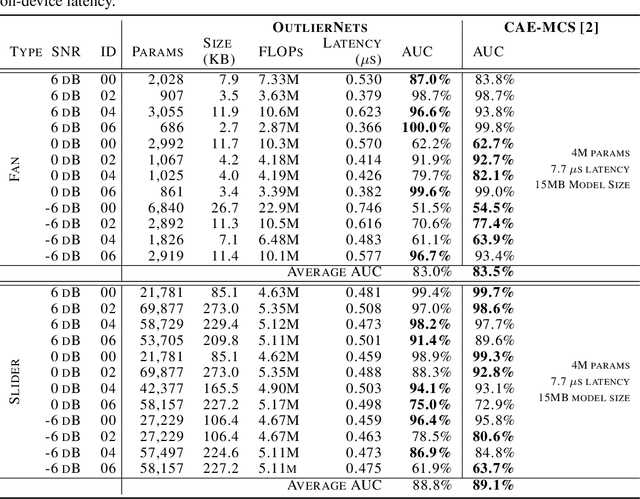
Abstract:Human operators often diagnose industrial machinery via anomalous sounds. Automated acoustic anomaly detection can lead to reliable maintenance of machinery. However, deep learning-driven anomaly detection methods often require an extensive amount of computational resources which prohibits their deployment in factories. Here we explore a machine-driven design exploration strategy to create OutlierNets, a family of highly compact deep convolutional autoencoder network architectures featuring as few as 686 parameters, model sizes as small as 2.7 KB, and as low as 2.8 million FLOPs, with a detection accuracy matching or exceeding published architectures with as many as 4 million parameters. Furthermore, CPU-accelerated latency experiments show that the OutlierNet architectures can achieve as much as 21x lower latency than published networks.
Fibrosis-Net: A Tailored Deep Convolutional Neural Network Design for Prediction of Pulmonary Fibrosis Progression from Chest CT Images
Mar 06, 2021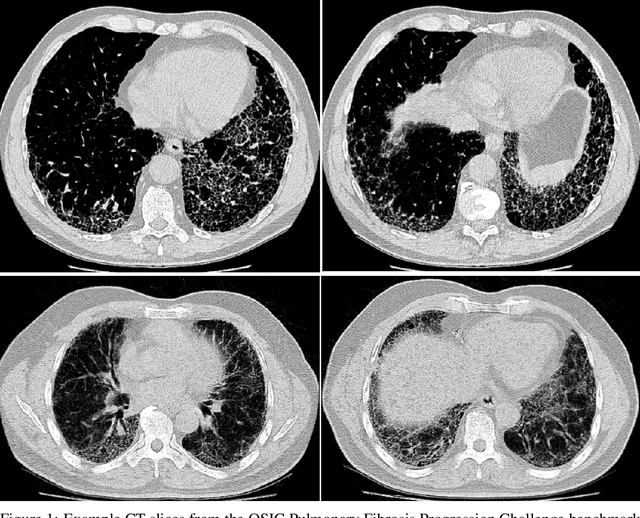
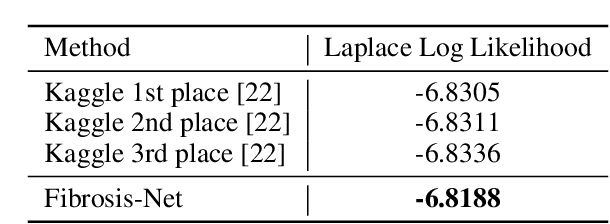
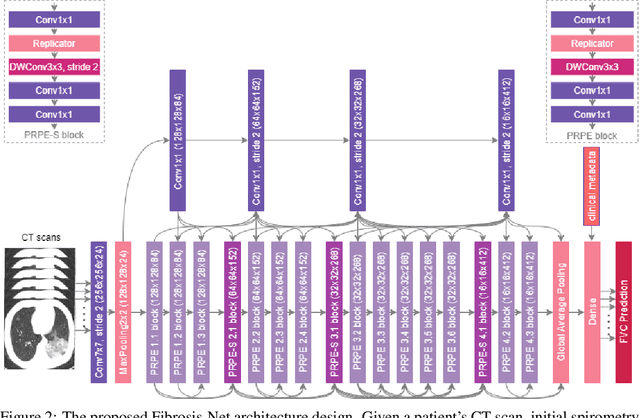
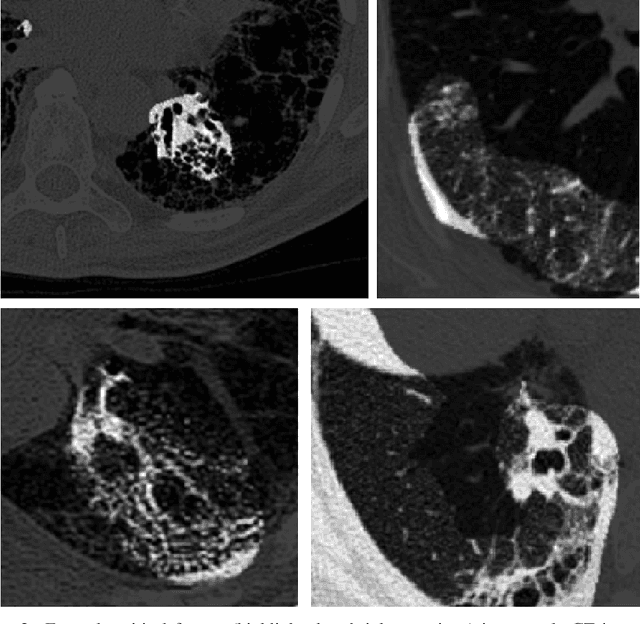
Abstract:Pulmonary fibrosis is a devastating chronic lung disease that causes irreparable lung tissue scarring and damage, resulting in progressive loss in lung capacity and has no known cure. A critical step in the treatment and management of pulmonary fibrosis is the assessment of lung function decline, with computed tomography (CT) imaging being a particularly effective method for determining the extent of lung damage caused by pulmonary fibrosis. Motivated by this, we introduce Fibrosis-Net, a deep convolutional neural network design tailored for the prediction of pulmonary fibrosis progression from chest CT images. More specifically, machine-driven design exploration was leveraged to determine a strong architectural design for CT lung analysis, upon which we build a customized network design tailored for predicting forced vital capacity (FVC) based on a patient's CT scan, initial spirometry measurement, and clinical metadata. Finally, we leverage an explainability-driven performance validation strategy to study the decision-making behaviour of Fibrosis-Net as to verify that predictions are based on relevant visual indicators in CT images. Experiments using the OSIC Pulmonary Fibrosis Progression Challenge benchmark dataset showed that the proposed Fibrosis-Net is able to achieve a significantly higher modified Laplace Log Likelihood score than the winning solutions on the challenge leaderboard. Furthermore, explainability-driven performance validation demonstrated that the proposed Fibrosis-Net exhibits correct decision-making behaviour by leveraging clinically-relevant visual indicators in CT images when making predictions on pulmonary fibrosis progress. While Fibrosis-Net is not yet a production-ready clinical assessment solution, we hope that releasing the model in open source manner will encourage researchers, clinicians, and citizen data scientists alike to leverage and build upon it.
CancerNet-SCa: Tailored Deep Neural Network Designs for Detection of Skin Cancer from Dermoscopy Images
Nov 21, 2020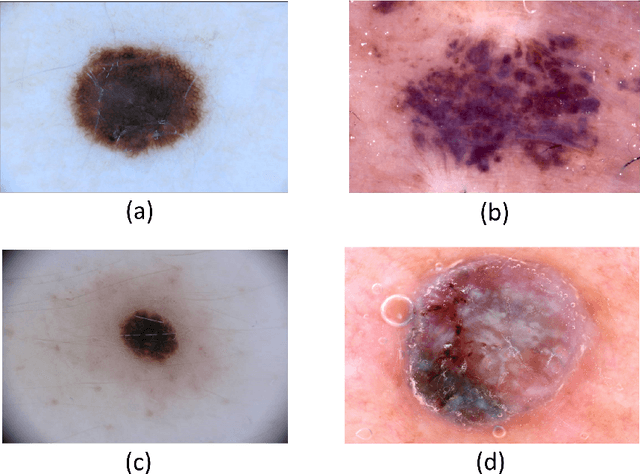

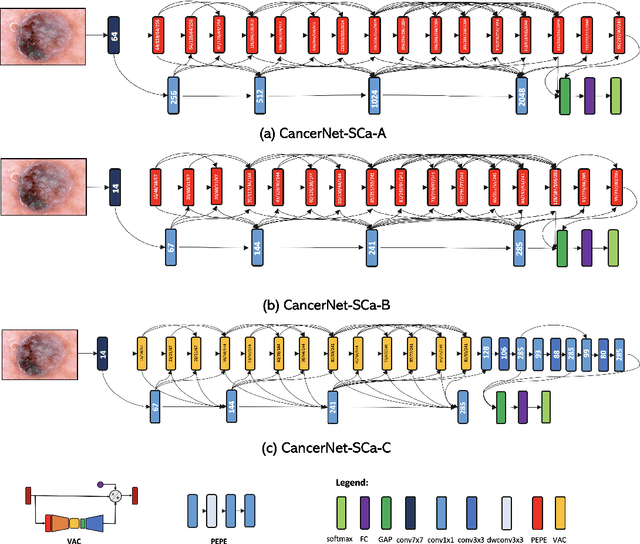

Abstract:Skin cancer continues to be the most frequently diagnosed form of cancer in the U.S., with not only significant effects on health and well-being but also significant economic costs associated with treatment. A crucial step to the treatment and management of skin cancer is effective skin cancer detection due to strong prognosis when treated at an early stage, with one of the key screening approaches being dermoscopy examination. Motivated by the advances of deep learning and inspired by the open source initiatives in the research community, in this study we introduce CancerNet-SCa, a suite of deep neural network designs tailored for the detection of skin cancer from dermoscopy images that is open source and available to the general public as part of the Cancer-Net initiative. To the best of the authors' knowledge, CancerNet-SCa comprises of the first machine-designed deep neural network architecture designs tailored specifically for skin cancer detection, one of which possessing a self-attention architecture design with attention condensers. Furthermore, we investigate and audit the behaviour of CancerNet-SCa in a responsible and transparent manner via explainability-driven model auditing. While CancerNet-SCa is not a production-ready screening solution, the hope is that the release of CancerNet-SCa in open source, open access form will encourage researchers, clinicians, and citizen data scientists alike to leverage and build upon them.
 Add to Chrome
Add to Chrome Add to Firefox
Add to Firefox Add to Edge
Add to Edge